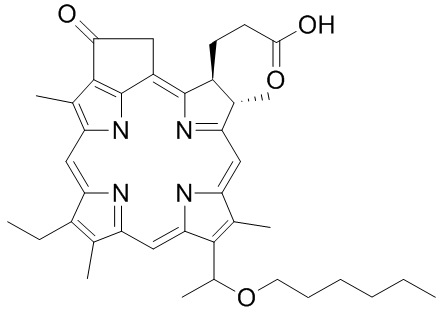Variation between receptor sequence and immune gene-expression may be expected to reflect direct and indirect  mechanisms of feedback between them. While high-throughput measurements have examined both independently in bulk samples, no combined cellto-cell analysis of these two critical components of immune response has yet been performed. We began our antibody sequence analysis by focusing on the antibody heavy chain, both because it bears the greatest responsibility for antibody specificity in general and because its large VDJ-junctional region avails it of far greater diversity as compared to the light chain. Moreover, this extended junctional diversity, generated randomly from somatic gene recombination undergone during B-cell development, provides crucial information about the common ancestry of B-cells with the same V/J recombination. This information can be used to illuminate the processes of B-cell development and clonal expansion in data-sets of arbitrary size. We classified antibody sequences according to clonal lineage by performing single-linkage clustering on their heavy chain CDR3-regions, with a distance-threshold of one amino acid, and found evidence for clonal expansion exclusively among PE+ B-cells. This helped to confirm that no systematic cross-contamination had occurred between cell samples. Using these heavy-chain clonal lineage designations as a benchmark, light-chains that had been successfully sequenced were filtered according to a statistical test that quantified the likelihood of a heavy/light-chain pairing to have occurred randomly, in order to eliminate potential PCR-contaminants. This further helped correct for B cell clonal lineages that had been mis-assigned as distinct from one another based on heavy chain sequence alone. We also analyzed our raw data directly, without using light-chain sequence-filtering or correction of antibody clonal lineages, and observed qualitatively identical results. The B-cell lineages originated in several distinct V/J-combinations. However, no overlap among clonal lineages, as characterized by their heavychain CDR3 regions, was found between PE+ and PEpopulations. We next analyzed antibody gene mutational content by tallying synonymous and non-synonymous mutations for each cell’s heavy and light chains. The isotype correlation and anti-correlation with somatic mutation were consistent with the standard model for B cell maturation. IgG expression, requiring AID-induced isotype classswitching, correlated positively with somatic mutation. Conversely, IgM and IgD correlated negatively with somatic mutation, affirming their preferential expression by un-activated, nonmutating B-cells. Such negative correlations, found in both mice, existed for only a few other genes. The most prominent of these were EBI-2, expressed on plasma and non-germinal center B-cells,, and the FCER2A receptor, responsible for the membrane-display of IgE antibodies on B-cells.
mechanisms of feedback between them. While high-throughput measurements have examined both independently in bulk samples, no combined cellto-cell analysis of these two critical components of immune response has yet been performed. We began our antibody sequence analysis by focusing on the antibody heavy chain, both because it bears the greatest responsibility for antibody specificity in general and because its large VDJ-junctional region avails it of far greater diversity as compared to the light chain. Moreover, this extended junctional diversity, generated randomly from somatic gene recombination undergone during B-cell development, provides crucial information about the common ancestry of B-cells with the same V/J recombination. This information can be used to illuminate the processes of B-cell development and clonal expansion in data-sets of arbitrary size. We classified antibody sequences according to clonal lineage by performing single-linkage clustering on their heavy chain CDR3-regions, with a distance-threshold of one amino acid, and found evidence for clonal expansion exclusively among PE+ B-cells. This helped to confirm that no systematic cross-contamination had occurred between cell samples. Using these heavy-chain clonal lineage designations as a benchmark, light-chains that had been successfully sequenced were filtered according to a statistical test that quantified the likelihood of a heavy/light-chain pairing to have occurred randomly, in order to eliminate potential PCR-contaminants. This further helped correct for B cell clonal lineages that had been mis-assigned as distinct from one another based on heavy chain sequence alone. We also analyzed our raw data directly, without using light-chain sequence-filtering or correction of antibody clonal lineages, and observed qualitatively identical results. The B-cell lineages originated in several distinct V/J-combinations. However, no overlap among clonal lineages, as characterized by their heavychain CDR3 regions, was found between PE+ and PEpopulations. We next analyzed antibody gene mutational content by tallying synonymous and non-synonymous mutations for each cell’s heavy and light chains. The isotype correlation and anti-correlation with somatic mutation were consistent with the standard model for B cell maturation. IgG expression, requiring AID-induced isotype classswitching, correlated positively with somatic mutation. Conversely, IgM and IgD correlated negatively with somatic mutation, affirming their preferential expression by un-activated, nonmutating B-cells. Such negative correlations, found in both mice, existed for only a few other genes. The most prominent of these were EBI-2, expressed on plasma and non-germinal center B-cells,, and the FCER2A receptor, responsible for the membrane-display of IgE antibodies on B-cells.
Both affects and is affected by the geneexpression of B-cells that produce them
Leave a reply